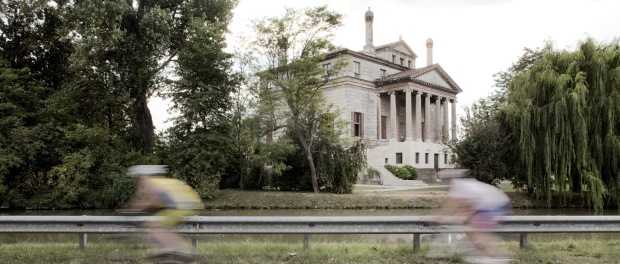CCA Presents Found in Translation: Palladio – Jefferson
 Andrea Palladio, Villa Foscari, la “Malcontenta”, Malcontenta di Mira, Venice, Italy, 2012. Photo by Filippo Romano
Andrea Palladio, Villa Foscari, la “Malcontenta”, Malcontenta di Mira, Venice, Italy, 2012. Photo by Filippo Romano
I am excited to announce the opening of another fantastic exhibition at the Canadian Centre of Architecture. Found in Translation: Palladio – Jefferson opened October 8 in the Octagonal Gallery and CCA Bookstore and is on display until January 15. An exhibition born from the inspirations of architectural historian Guido Beltramini and captured through the lens and modern day view point of photographer Filippo Romano.

Thomas Jefferson, Virginia State Capitol, Richmond, Virginia, United States, 2014. Photo by Filippo Romano
The exhibition explores the architecture of Palladio and Jefferson by looking at these architectural masterpieces from a modern day perspective. Creative duo, Beltramini and Filippo spent two years creating this exhibition and hoped to compare the differing contexts to ‘capture’ the idea of what is found, and therefore lost and adapted, in translation.

Thomas Jefferson, Virginia State Capitol, Richmond, Virginia, United States, 2014. Photo by Filippo Romano
Director of the Palladio Museum in Vincenza, Italy, Guido Beltramini is the author of various books and essays regarding Palladio’s architecture and the Italian Renaissance and has helped to present many Palladio exhibitions. Beltramini was excited about exploring the change of design in transition between physical place to see the shifts of what is considered important. Beltramini strongly believes, Pallaio’s works are “icons in the landscape.”
Italian documentary photographer Fillipo Romano focusses his work on cities and the influences of the people within these spaces. He has done work worldwide and was excited to take on this challenge because these building are some of the most photographed in the world and Filippo believed we needed to see a newer version of these historical sites.
“I accepted this challenge because I believed in it. I am still looking for the real connection we have to historical buildings.”
The project explores the fundamental principles of architectural design and work by Andrea Palladio. This, in turn, became the inspiration for American President and architect Thomas Jefferson many years later in the United States. All a significant part of what was considered the ‘new world’. Jefferson saw the work done by Palladio as the perfect model to base his own designs on and through the photographs and original design books on display, we can see the adaptations made in each architectural plan.
The exhibition is split between Filippo’s modern day photography which are projected onto the walls of the Octagonal Theatre and the two rare books on display in the CCA Bookstore. I Quattro Libri dell’Architettura (The Four Books of Architecture) from 1570, and the first English translation of The Architecture of A. Palladio from 1721. Here, we are able to see the comparisons in design. This, contrasted with Filippo’s modern set photographs, is an interesting comparison and therefore makes for a thoughtful and interesting exhibition.
To have the chance to see these differences visitors really have the opportunity to notice the significant contextual influences of economic, financial, political and social factors during each time period and from here it can be noted, what exactly is ‘found’ in translation.
“We explore the change that occurs in translation,” Beltramini said. “And the sense of space and what remains there.”
Found in Translation: Palladio – Jefferson is on display at the Canadian Centre of Architecture until January 15. More details regarding visiting time and ticketing can be found on the website, here.








